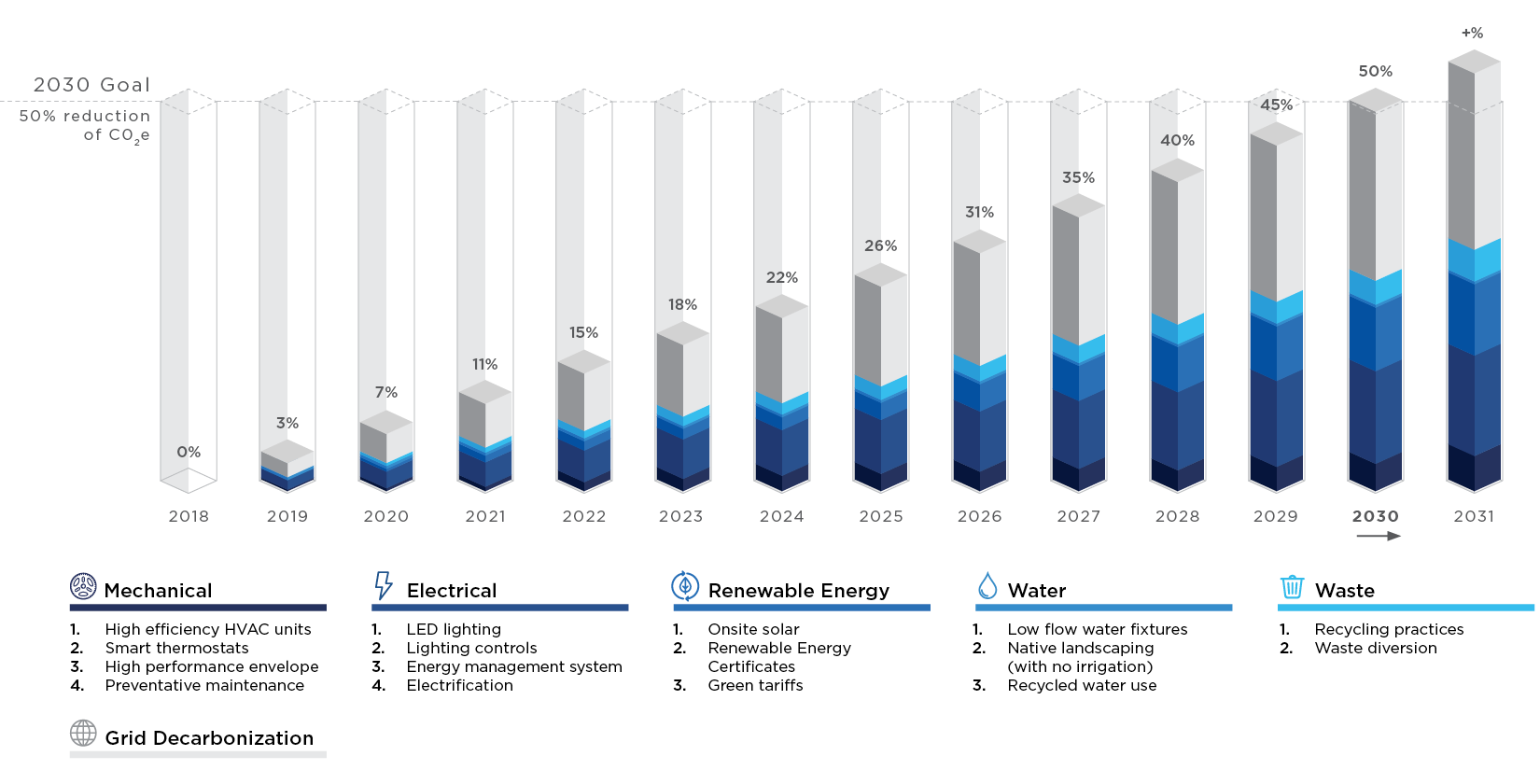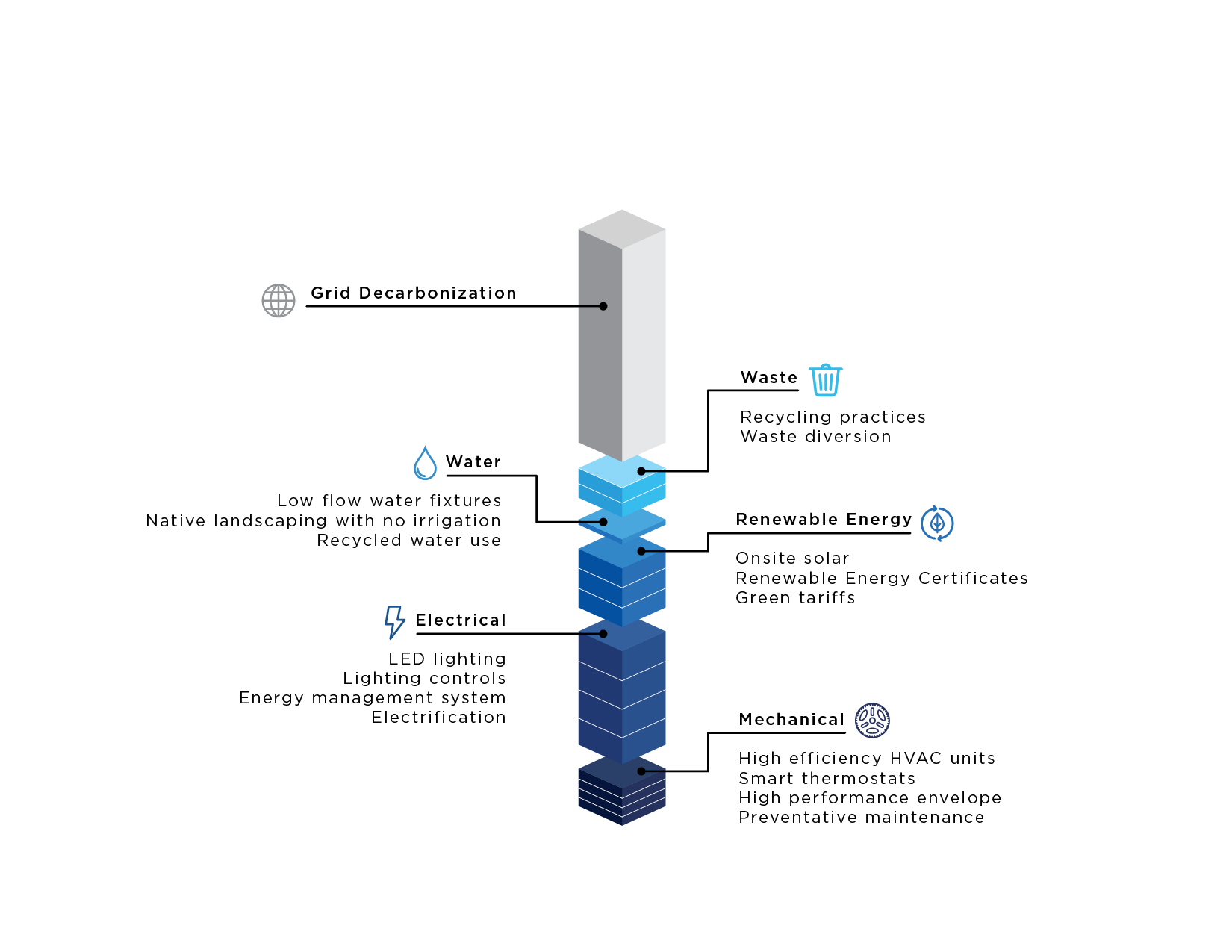In the global effort to tackle climate change, companies in every industry are setting ambitious goals to slash or eliminate their greenhouse gas (GHG) emissions over the next few decades. But even the everyday decisions being made now, like swapping out an old building HVAC system with similar like-for-like equipment, can throw a wrench into a company’s plans to cut carbon for years to come. Without a clear roadmap that lays out tangible steps and goals for the long haul, those ambitious goals are going to stay as aspirational targets.

Example Decarbonization roadmap displaying the phase-out of building carbon emissions through energy efficient measures over time.
So, how do you know when and where to start when creating a decarbonization roadmap?
The creation of an effective decarbonization roadmap includes several key components:
IDENTIFYING WHERE TO START
A smart decarbonization roadmap first and foremost allows companies to look at their entire building portfolio and determine which ones need the most immediate attention. By performing an initial utility benchmarking analysis, companies can better understand how much energy each building uses – and where the biggest operational costs lie – and compare those both within their own organization and to industry standards. This also gives an initial perspective on where projects may be best implemented to get the biggest return on investment (ROI), or bang for their buck. On-site energy audits are a necessary step to validating those initial findings and uncover more ways to save energy, from upgrading any remaining lighting that might not already be LED fixtures, to performing deep building optimization through an analytics-based retrocommissioning approach, or even identifying the best ways to implement on-site renewable energy systems like solar.

Decarbonizing your building assets requires a wholistic (and realistic) view of several crucial features to your facility’s operations, including the audit and smart usage of waste, water, renewables, electricity and mechanical equipment.
MAKING PLANS THAT LAST – WITH STRATEGIC CAPITAL
So, you’ve figured out what needs fixing and where – now what? The answer is in long-term strategic capital planning! By bundling up the energy-saving projects into a budget plan that covers several years, such as a five-to-ten year outlook, companies can make it easier to get things done and predict costs, savings, and know how long it’ll take to break even (or even become revenue positive). This helps the key decision-makers know what’s expected each year, and keeps everyone on the same page. Getting different departments like Facilities, Engineering, and Finance on board also makes sure everyone’s working together to hit those decarbonization goals. If you don’t have the right people in the room at the beginning, an organization may end up fighting itself when trying to achieve its own goals.
MEASURING, VERIFYING & REPORTING RESULTS
An effective decarbonization roadmap also includes simple ways to ensure that all changes are actually working as intended. This requires measuring and verifying the success of implemented projects to validate the impact an organization is making. Tracking annual reduction targets and project metrics through a centralized reporting dashboard allows building portfolio managers to capture energy, water, and carbon emission savings, actual costs, estimated savings, and cumulative project achievements. This reporting system makes it easy for facility managers to see how each site is doing, and gives high-level stakeholders a snapshot of the whole portfolio’s performance at a given time. Ultimately, this helps keep everyone accountable for maintaining their role in what is ultimately a large, organization-wide effort.
Part 2 will provide real-world benefits for organizations interested in implementing program-wide decarbonization roadmaps for their enterprise real estate portfolios.

